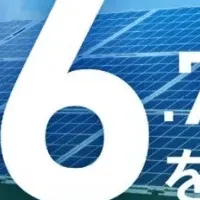
Huawei and SchneiTec Launch First TÜV SÜD-Certified Grid-Forming Energy Storage Project
Huawei and SchneiTec Launch First TÜV SÜD-Certified Grid-Forming Energy Storage Project
In a move that marks a significant milestone for Cambodia’s quest for sustainable energy, Huawei Digital Power, in partnership with SchneiTec, has successfully commissioned the world’s inaugural TÜV SÜD-certified grid-forming energy storage project. This ambitious initiative is designed to facilitate the country's transition to renewable energy and to enhance its electric grid stability.
The project highlights Huawei’s innovative solutions in energy management and represents an essential step toward expanding Cambodia's energy capacity. It consists of a 12 MWh energy storage system, featuring a 2 MWh testing field to validate Huawei's proprietary Smart String grid-forming energy storage technology (ESS). The development is critical as it allows for the seamless integration of fluctuating renewable energy sources, ensuring a stable supply to the grid.
Project Details and Impact
The energy storage project has undergone rigorous testing and certification by TÜV SÜD, a globally recognized authority in energy technology certification. The certification process confirmed key technical capabilities of Huawei’s Smart String ESS, such as inertial response, voltage ride-through, frequency support, and overload performance, which are vital for maintaining grid stability.
Highlights of the project include:
1. Inertia in Grid Formation: Huawei’s grid-forming technology demonstrated exceptional inertial response performance, achieving an inertia time constant range of 3 to 20 seconds, well beyond the standard requirement of 3 to 12 seconds. This feature ensures quicker grid stabilization, essential for integrating more renewable sources into the energy mix.
2. Voltage Ride-Through: The system effectively handles voltage fluctuations, maintaining grid stability during transient voltage drops and spikes. It remains operational across a significant voltage range, from 5% to 130% of the nominal grid voltage.
3. Overload and Frequency Support: The grid-forming ESS operated reliably under short-term overload conditions of up to 300%, effectively suppressing low-frequency oscillations in the range of 0.2 Hz to 5 Hz, which can affect grid performance.
4. Black Start Capability: A notable feature of the technology is its ability to perform a rapid black start under load, enabling efficient recovery of the grid after a blackout.
The independent verification of Huawei's grid-forming ESS technology marks a significant step as it is the first on-site validation of this system abroad. It aligns with international standards, including IEC, China National Standards, the UK Grid Code, and German VDE specifications, underscoring its global recognition for energy management and grid stability.
This project is not just a technical achievement for Huawei Digital Power, but also a pivotal advancement in the energy sector’s innovation landscape. The collaboration with SchneiTec signals an essential commitment to the renewable energy roadmap of Cambodia. As part of this roadmap, Huawei Digital Power aims to continuously drive innovations, providing stable, scalable, and reliable energy solutions to meet the nation's growing demands for sustainable electricity.
In conclusion, this landmark project epitomizes the importance of sustainable energy strategies in improving the ecological footprint of developing nations while enhancing energy security. Huawei Digital Power and SchneiTec's achievement reflects a shared vision for a greener, energy-efficient future for Cambodia.
Topics Energy)










【About Using Articles】
You can freely use the title and article content by linking to the page where the article is posted.
※ Images cannot be used.
【About Links】
Links are free to use.